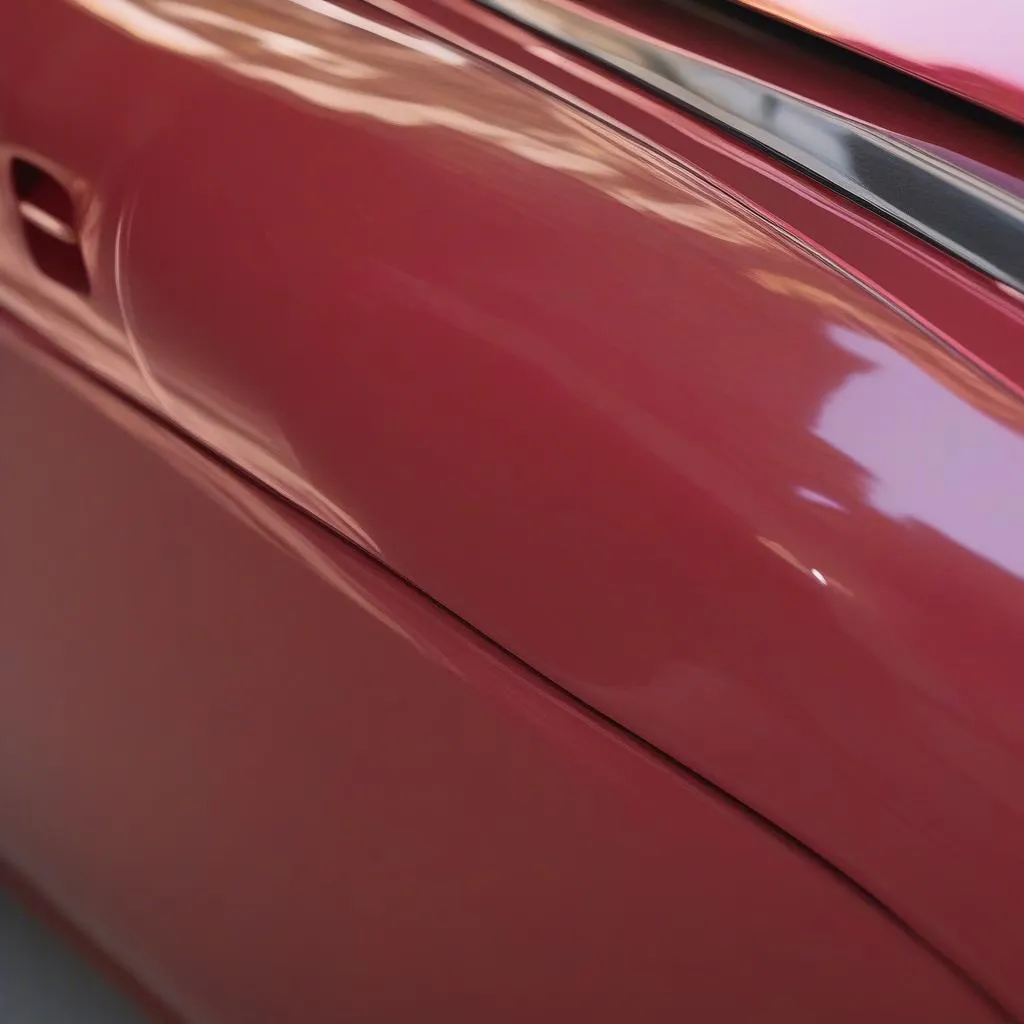Imagine driving down the road, admiring the sleek, glossy finish of your car. It’s a feeling of pride, knowing that your vehicle stands out from the crowd. But have you ever stopped to think about the paint that gives it that shine? While many modern cars use water-based paint, there’s still a place for oil-based car paint in the automotive world.
Understanding Oil-Based Car Paint: A Deeper Dive
What is Oil-Based Car Paint?
Oil-based car paint, sometimes referred to as solvent-based paint, utilizes a combination of pigments, resins, and solvents to create a protective and aesthetic coating. This type of paint has been around for decades and is known for its durability and long-lasting shine. The solvent acts as a carrier for the pigments and resins, allowing them to be evenly distributed and applied to the car’s surface. Once the solvent evaporates, the paint hardens, forming a strong and durable layer.
Benefits of Oil-Based Car Paint
- Increased durability: Oil-based paints are renowned for their resistance to scratches, chips, and other forms of wear and tear. This makes them a popular choice for cars that are frequently exposed to harsh environmental conditions or used for heavy-duty work.
- Long-lasting shine: Oil-based paints often produce a deep, glossy finish that stands the test of time. The shine tends to last longer compared to water-based paints, providing a consistent look for years.
- Excellent adhesion: Oil-based paints typically have better adhesion properties than water-based paints. This is important for ensuring the paint bonds tightly to the car’s surface, preventing peeling or flaking over time.
 Benefits of Oil-Based Car Paint for Car Detailing
Benefits of Oil-Based Car Paint for Car Detailing
Potential Drawbacks of Oil-Based Car Paint
- Strong odor: Oil-based paints have a strong, pungent odor that can be unpleasant to work with. This is because the solvents used in these paints are volatile and release fumes during application and drying.
- Longer drying time: Oil-based paints generally require a longer drying time than water-based paints. This can be inconvenient for car owners who want their cars repainted quickly.
- Environmental concerns: The solvents used in oil-based paints can be harmful to the environment. This is why many manufacturers have shifted towards water-based paint, which has a smaller environmental impact.
Oil-Based Car Paint: A Comparison with Water-Based Paint
Oil-based car paint has been a staple in the industry for many years, but water-based paint has gained traction in recent times due to its environmental advantages and faster drying times.
Here’s a quick comparison to help you understand the key differences:
| Feature | Oil-Based Paint | Water-Based Paint |
|---|---|---|
| Durability | High | Moderate |
| Shine | Deep, glossy | Moderate gloss |
| Drying Time | Long | Shorter |
| Odor | Strong | Less odor |
| Environmental Impact | Higher | Lower |
Oil-Based Car Paint: A Modern Automotive Application
While water-based paints have become more popular, oil-based paints still hold their place in certain applications.
For example, professional restoration shops often prefer oil-based paint when working on classic cars. They value its durability, deep shine, and ability to provide a finish that closely resembles the original paint.
Here’s a quote from Michael, a renowned auto body expert: “For classic car restoration, I still prefer oil-based paints. The finish is unmatched, and the paint holds up beautifully over time.”
Another application where oil-based paints excel is in industrial settings. For example, trucks and construction equipment often receive oil-based paint because of its exceptional resistance to wear and tear.
 Oil-Based Car Paint for Industrial Applications: Trucks
Oil-Based Car Paint for Industrial Applications: Trucks
Imagine a heavy-duty truck operating in a demanding construction site: The oil-based paint on its body will endure the daily bumps and scratches, ensuring the vehicle’s appearance remains consistent and protected.
Frequently Asked Questions
How long does it take for oil-based car paint to dry?
Oil-based paint typically takes longer to dry than water-based paint. The drying time can vary depending on factors such as temperature, humidity, and the thickness of the paint layer. However, it generally takes at least 24 hours for oil-based paint to fully cure, meaning it is completely dry and hardened.
Is oil-based car paint still available?
Yes, oil-based car paint is still available, although its popularity has decreased due to the environmental concerns and the increasing use of water-based paints. You can find oil-based car paint at many automotive supply stores, both online and in person.
Is oil-based car paint the best choice for my car?
The best choice for your car depends on your specific needs and preferences. If you are looking for a durable and long-lasting finish that will withstand the test of time, oil-based paint may be a good option. However, if you are concerned about environmental impact or need a paint that dries quickly, water-based paint might be a better choice.
Related Articles
To learn more about car paint, check out these related articles on our website:
Need Help with Car Diagnostics?
If you’re dealing with car problems and need help with diagnostics, we’re here to assist you! Our team of expert mechanics is available 24/7 to provide support. Contact us via Whatsapp at +84767531508. We’ll help you navigate the world of car repairs and ensure your vehicle is back on the road safely and efficiently.
Don’t hesitate to share your thoughts and experiences with oil-based car paint in the comments below. We’d love to hear your insights!